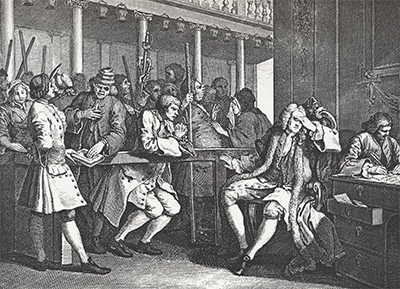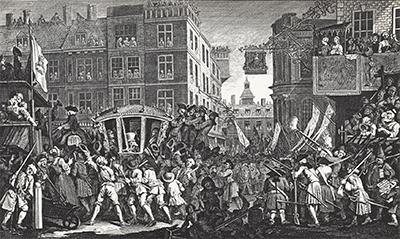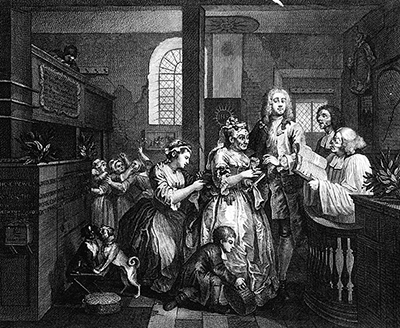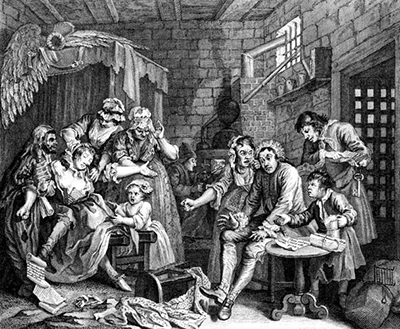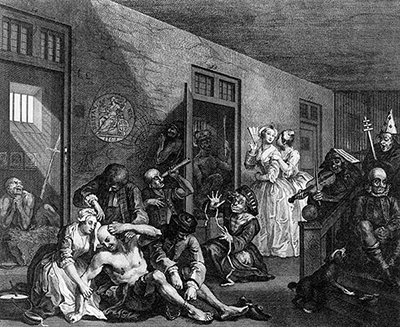Hogarth achieved huge success with his series of engravings having initially started his career as a silversmith
Just prior to 1720 Hogarth would switch to engraving copper plates commercially. His own family had experienced considerable financial hardship at various parts of his unbringing, making William's own success particularly important. Thankfully for the Hogarths family a young William would quickly receive sufficient commissions in order to make a success of his early years as a professional artist. Cards, book illustrations and prints would suggest at the talent and achievements that were to follow.
Engravings were an efficient route to becoming a profitable artist during this artistic era, where a single artwork could be reproduced quickly and cheaply. Those with the skills to create detail engravings could then hold sufficient funds to also experiment with other mediums to satisfy their artistic urges. Such was the production lines set up by artists like Hogarth that even today you can get hold of an original print from one of Hogarth's engravings for a surprisingly reasonable price. The artist would also sometimes create paintings and identical engravings alongside them.
The trials and tribulations of Hogarth's early life are believed to have influenced the themes behind some of his most famous paintings and engravings. For example, his use of satire was relatively unheard of at this time, and artworks such as his Gin Lane and Beer Street series were his most significant contributions. Hogarth also covered moral issues in other series such as A Harlot's Progress, A Rake's Progress and Marriage A-la-Mode. These four series best capture the themes and technical skills used by Hogarth across his career. Other notable engravers include Albrecht Durer, Rembrandt and George Stubbs.
Art as an adornment was relatively new at this stage, previously reserved for large, wealthy institutions who could afford original paintings. Hogarth tapped into this growing market through his work with engraving and it allowed his reputation to filter down into the lower classes.
Individual engravings are listed below, covering the most famous series first of all. It was rare to find an artist with business-sense, the two rarely seem to have gone together when browsing the recent centuries of art history. Rembrandt was famous for maximising the financial potential of his artistic skills but was forced into this by his poor budgeting skills and obsession with collecting the work of other European masters.




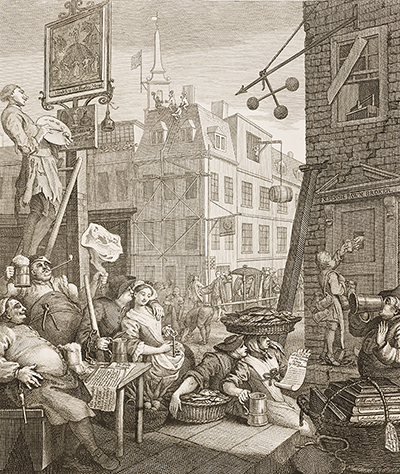
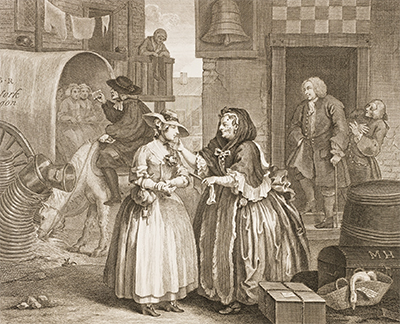
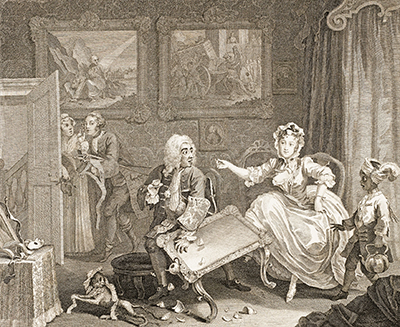
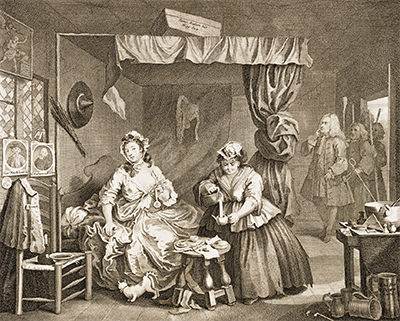
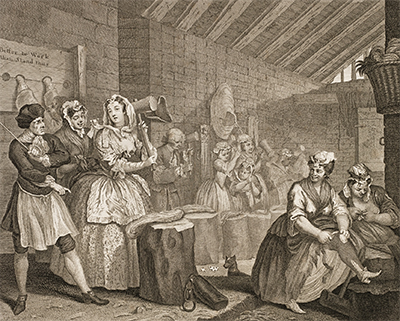

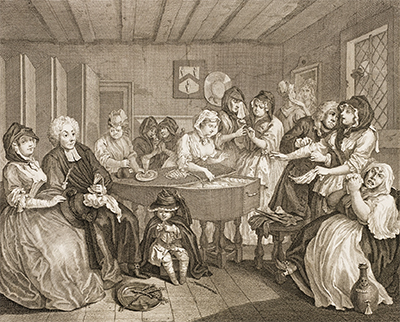
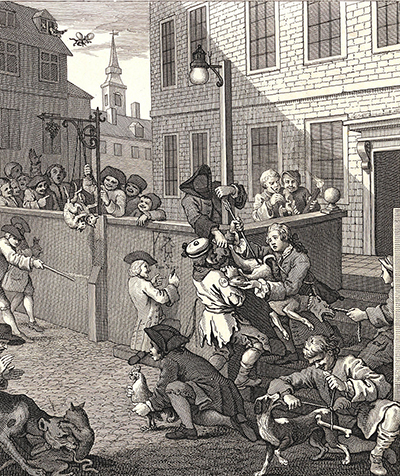

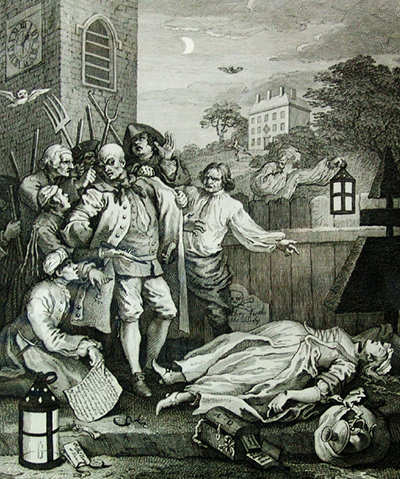
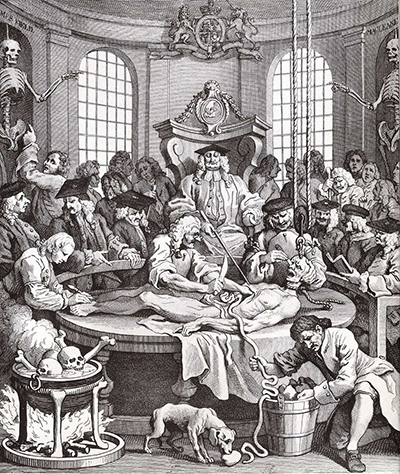


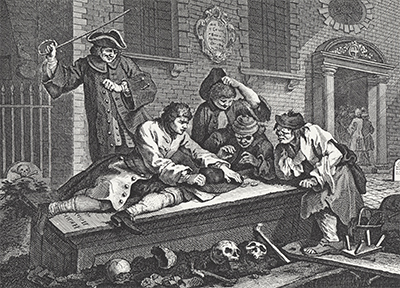

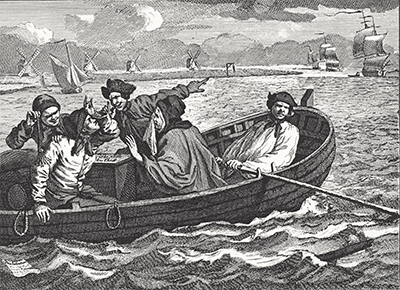
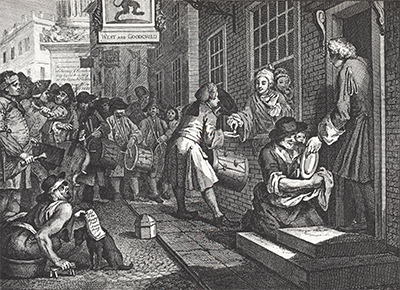
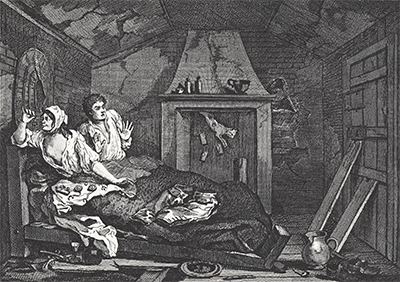
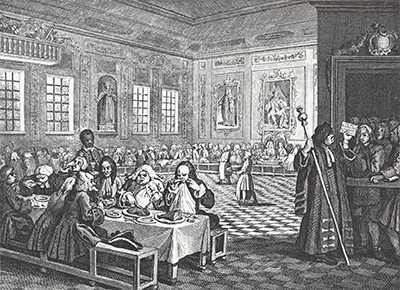
, and taken in a Night-Cellar with his Accomplice William Hogarth.jpg)
